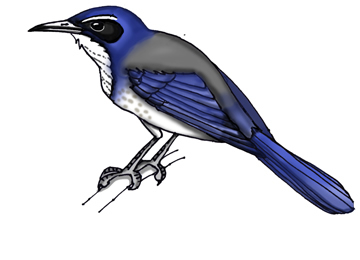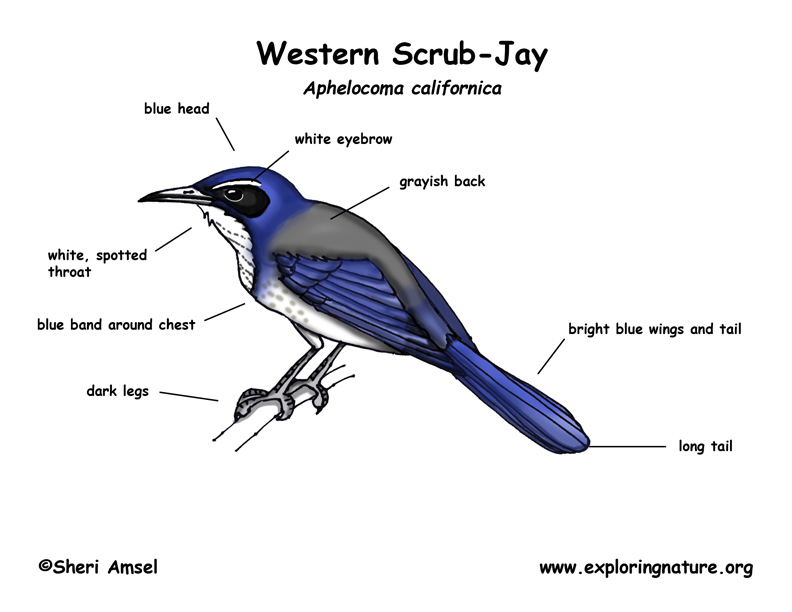

They are found west of the Rocky Mountains from southern Washington down into Texas and Mexico.
They live in scrubby places and open woodlands where oak trees grow.
The scrub jay is a big perching bird with a blue head, wings, and tail. They have a white patch on the throat that is bordered by a blue necklace. They have a gray back and a white eyebrow.
They are known for being able to hide seeds and nuts and find them later. They also seem to be able to learn this trick from watching other jays and can stash hundreds and hundreds of them every season. Like all jays, they are not shy birds but are often seen in yards and parks.
They eat nuts and seeds like acorns, using their big beaks to break into the nut for the meat inside. They also each insects.
Females lay up to 6 light green eggs with some spotting in a nest of twigs built in a bush or shrub.
Kingdom: Animalia
Phylum: Chordata
Subphylum: Vetebrata
Class: Aves
Order: Passeriformes
Family: Corvidae
Genus: Aphelocoma
Species: A. californica
When you research information you must cite the reference. Citing for websites is different from citing from books, magazines and periodicals. The style of citing shown here is from the MLA Style Citations (Modern Language Association).
When citing a WEBSITE the general format is as follows.
Author Last Name, First Name(s). "Title: Subtitle of Part of Web Page, if appropriate." Title: Subtitle: Section of Page if appropriate. Sponsoring/Publishing Agency, If Given. Additional significant descriptive information. Date of Electronic Publication or other Date, such as Last Updated. Day Month Year of access < URL >.
Amsel, Sheri. "Jay (Western Scrub)" Exploring Nature Educational Resource ©2005-2024. December 13, 2024
< http://www.exploringnature.org/db/view/Jay-Western-Scrub >

